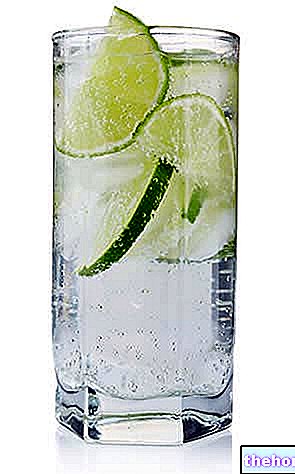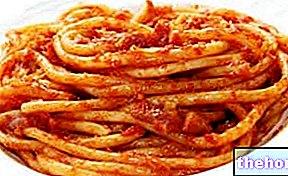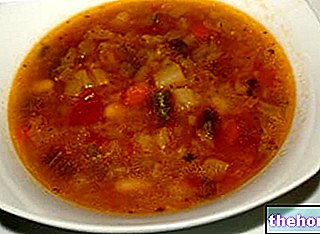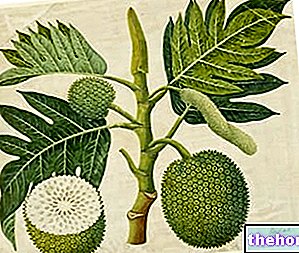Generality
Amaretti are sweet dry pastry foods, more precisely biscuits, which according to the original recipe can take on a dry or soft consistency; all amaretti have a typical bitter-sweet taste, a more or less convex disc shape, a surface rough and cracked, and a beige color tending to golden.

The Piedmontese amaretti of Saronno, in all probability, are currently the best known (perhaps with regard to the alcoholic drink of the same name), and are also a very popular ingredient in the formulation of various sweets, spoon desserts and filled pasta. makes it drier than the other variants, while the Ligurian macaroons of Sassello are distinguished by a soft consistency and a lighter color; those of Sicily are not attributable to a city or to a well-defined area of origin but, in consideration of the considerable production of almonds, it cannot be excluded that they may represent a typical regional preparation.
Basic Ingredients and Video Recipe
The BASIC ingredients for the production of amaretti are: sweet almonds (fruit of the tree P. dulcis), granulated sugar (sucrose) and egg whites of hen's egg. It is not uncommon for almonds to be replaced by a raw marzipan paste (mixture of almonds, egg whites and sugar), with other oil seeds (such as hazelnuts, fruit of the tree C. avellana) or with coconut flour (fruit of the tree C. nucifera), just as it is possible that some yolks are integrated into the egg whites.
The most attentive readers will certainly have noticed that among the ingredients there are NOT bitter almonds (fruit of the tree P. amygdalus or seed of apricots or peaches); this is because, in fact, the addition of this ingredient varies considerably from one recipe to another and some do not include it at all. Furthermore, in all the traditional recipes of amaretti the presence of flour is excluded, therefore the dough is semi-liquid; at home level or in small catering productions, the shaping takes place through the use of a pastry bag (sac à poche) equipped with a smooth nozzle. The macaroons are cooked in the oven at a temperature of about 150-180 ° C (variable time depending on the cooking method: ventilated, static, with or without steam).
ATTENTION! Bitter almonds are a highly controversial food; they are rich in amygdalin, a cyanogenic glucoside which by hydrolysis releases benzaldehyde, glucose and hydrogen cyanide; this last molecule is STRONGLY toxic for humans and in high concentrations can lead to poisoning and even death (6-10 seeds in children and 50-60 seeds for adults).
Video Recipe - Homemade Soft Macaroons
Soft amaretti
Problems with playing the video? Reload the video from youtube.
- Go to the Video Page
- Go to the Video Recipes Section
- Watch the video on youtube
Complete list of Amaretti-based recipes
Other Examples of recipes

Nutritional values (per 100 g of edible portion)
- Amaretti variant 1
Ingrediants: 1000g of granulated sugar, 350g of peeled sweet almonds, 60g of peeled bitter almonds, 100g of egg white, vanilla to taste. Method: Chop the almonds with half the sugar and an egg white, work by hand adding the rest of the sugar and the egg white, form the dough with the pastry bag with a smooth nozzle and bake at 180 ° C. - Cocoa macaroons variant:
Ingrediants: 1000g of peeled sweet almonds, 2600g of granulated sugar, 150g of cocoa, 200g of egg whites. Method: as above, adding the cocoa during processing, sprinkle with sugar before baking. - Paste for sweet macaroons:
Ingrediants: 2500g of granulated sugar, 1500g of peeled sweet almonds, 700g of egg whites, grated lemon zest to taste. Method: as in the amaretti variant 1. - Paste for amaretti with hazelnuts:
Ingrediants: 1000g of sugar, 600g of peeled hazelnuts, 320g of egg whites. Method: as in the amaretti variant 1.
Nutritional characteristics
On the side there is the translation of the "Variante amaretti 1", obtained by analyzing the ingredients listed and not by quoting the research bodies or the commercial labels applied on the packages of the biscuits purchased.
Macaroons are highly energetic foods; they bring considerable quantities of simple carbohydrates and lipids, even if unsaturated fatty acids predominate over saturated ones; proteins are present in fair quantities but do not contain a complete amino acid pool. Dietary fiber in macaroons is worthy of attention.
From the point of view of mineral salts, macaroons are rich in potassium, while as regards vitamins, the contribution of tocopherols (vitamin E) stands out.
NB: We remind you that the macaroons produced with bitter almonds contain potentially toxic molecules, therefore (especially in the baby's diet), it is advisable to consume them in moderation and in any case in REDUCED portions.























-nelle-carni-di-maiale.jpg)




